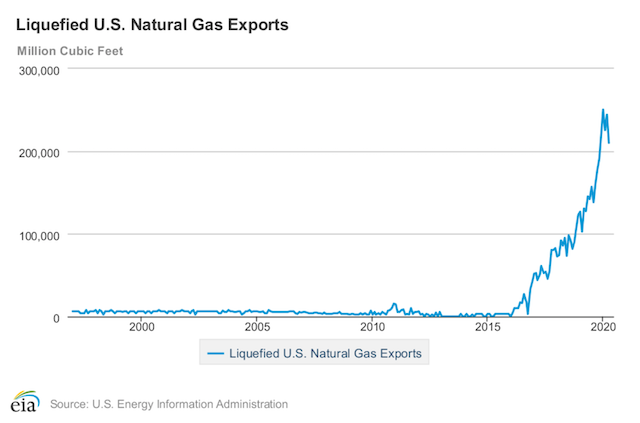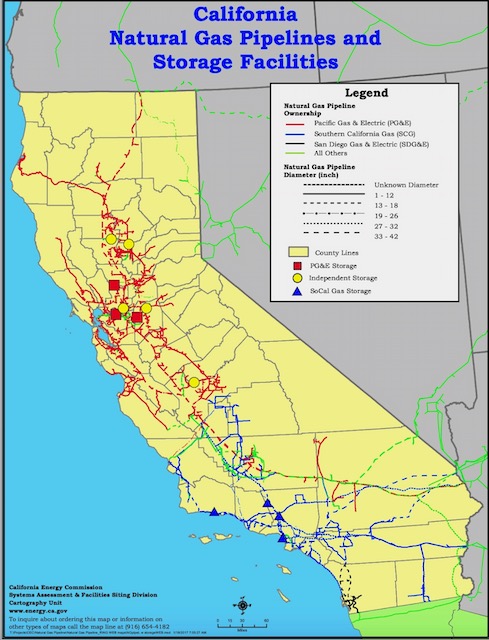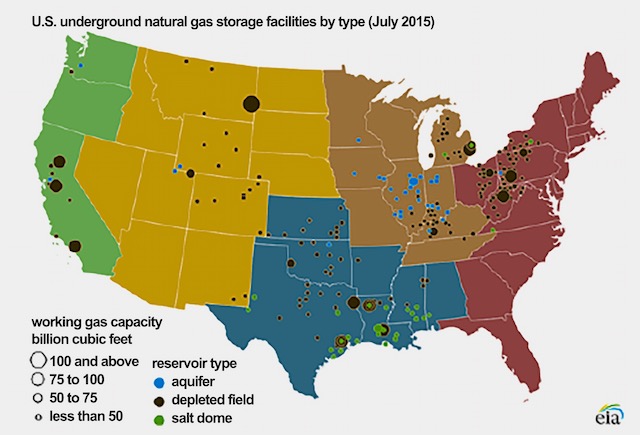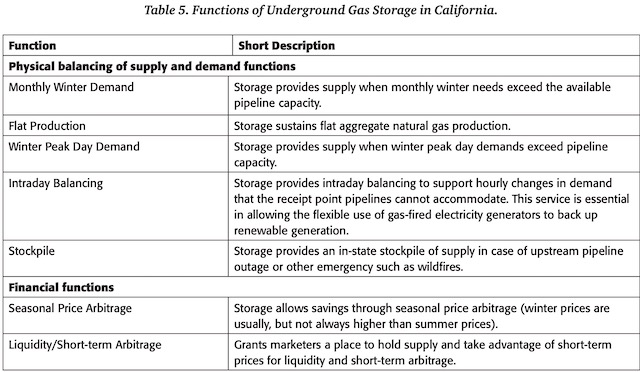Murphy DEP Proposes New Rules To Expand Storage Of Natural Gas In Underground “Caverns”
Gibbstown “Cavern” On Former Dupont Site “Repurposed” To Store LNG Export Gas
“Climate change impact assessment” limited to adaptation, not greenhouse gas emissions
No enforceable standards apply to greenhouse gas emissions
This is what “regulatory capture” looks like
Climate change impacts do not include the climate impacts of greenhouse gas emissions from or associated with the facility.
The “climate change impact statement” and DEP permit review provisions of the proposal lack any standards to deny a permit on the basis of climate impacts.
Today, the Murphy DEP proposed new regulations that would govern DEP permitting of new and existing facilities for the underground storage of natural gas and other petroleum products.
I suspect that DEP will spin these rules as updating or modernizing outdated permits or regulations based on an ancient 1951 law. DEP will use the LNG restriction to obfuscate and divert.
But make no mistake, just the opposite is the case: in fact, the proposed rules effectively promote expansion of fossil infrastructure, protect existing permits, and continue a dangerous practice that should be banned.
Underground storage caverns are part of the fossil infrastructure network. Although DEP fails to even mention this or analyze the need for this infrastructure capacity, California regulators analyze the need for storage capacity and explain the role of underground storage:
The 12 depleted gas or oil fields used to store gas underground are an essential element of the intrastate pipeline and distribution gas delivery systems in meeting peak seasonal natural gas demand in California. … No other state has such a diversity of supply access and storage capability. Through this system, California has the flexibility to augment pipeline gas with stored gas.[…]
Safety notwithstanding, [Yes, they actually wrote that!] California’s access to underground gas storage near its load centers makes it the envy of the nation’s natural gas market.
[The folks at Delaware Riverkeeper played the inside DEP game and got duped. DRN actually supported the development of regulations, instead of just opposing the need for this practice and seeking decommissioning of existing caverns and a ban on expansion or promotion of new fossil infrastructure. Remarkably, they did this despite noting that the Gibbstown LNG project was seeking expansion of the current cavern capacity of 186,000 barrels to 3 million barrels! ]
According to the DEP proposal:
The proposed new rules will apply to systems that are used for the underground storage of any natural or artificial gas, or any petroleum product or derivative of any petroleum product, with the exception of liquefied natural gas (LNG), as discussed below, and will govern the construction, operation, modification, and decommissioning of the systems. …
… Under the proposed rules, petroleum products and their derivatives include methane,ethane, propane, butane, gasoline, kerosene, fuel oil, synthetic oil, crude oil, and liquified petroleum gas (LPG) …
In New Jersey, there are six excavated rock caverns that store liquefied petroleum gases, specifically propane and butane. These caverns were permitted by the Department, known then as the Department of Conservation and Economic Development, as authorized by the Act. Five of the caverns are in Linden and were constructed in 1957, at the Bayway Refinery, then owned by the Esso Standard Oil Company. The caverns received operation permits in 1959 for the storage of propane (two caverns) and butane (three caverns). These caverns still store the same products for which each was permitted. A sixth cavern was constructed between 1966 and 1968 in Gibbstown at what was then DuPont’s Repauno works. It originally stored anhydrous ammonia. This cavern received its construction and operation permit in 1965. The Department issued a permit modification in 2016, to allow the cavern to be repurposed to store butane. While there is ongoing Department oversight with the existing permits at these facilities, these proposed rules establish regulations, considering current engineering practices and environmental conditions, to ensure that existing systems and any new cavern systems that are constructed will be operated and maintained in a manner protective of public health, safety, and the environment.
Don’t be fooled by the exclusion of storage of LNG. The DEP proposal would allow underground storage of fracked natural gas, which can easily be converted to LNG for export.
Given NJ’s proximity to major reserves of fracked gas in the Marcellus shale, huge and growing gas demand, well developed pipeline network, and coastal location ideal for LNG export, this rule proposal obviously provides the regulatory framework for a huge expansion of gas infrastructure.
This is exactly the kind of “predictability” and “regulatory certainty” financial investors and the fossil industry desire (see: Principle #6 on “regulatory capture”). Underground storage capacity also supports the “reliability” (real time balance of supply/demand) and need to meet “peak demand” sham justifications for natural gas. Look at the national picture and note the location of underground storage to fracked gas production:
[Note: And don’t think Gov. Murphy’s Energy Master Plan or off-shore wind program will reduce growing natural gas demand – just the opposite. As I’ve written many times, off shore wind is dependent on natural gas. California regulators’ capacity analysis reveals this in their finding: (on page 493, 527, and 530)
Finding: While forecasts suggest falling total gas demand out through 2030, none of the forecasts break out how much gas might be necessary to firm intermittent renewable generation and the timing of that need, factors which can affect the need for gas storage. … (493)
In describing its forecast in the 2016 CGR, PG&E said that greater use of gas-fired generation to back-up renewables with load following and other ancillary services was likely, but was not captured in the forecast…. (527)
Conclusion 2.9: Without gas storage, California would be unable to accommodate the electricity generation ramping that now occurs nearly every day and that may increase as more renewables are added to the grid. (530)
After reviewing the DEP proposal, I now realize that the corruption involved with the DEP permitting of the proposed Gibbstown LNG export facility is even worse than I had imagined. I must admit ignorance of the DEP’s prior 2016 permit for an “underground storage cavern” for the gas butane. – or the existence of the “caverns in Linden”.
Recall that, after the stealth DEP permitting of Gibbstown LNG export was publicly exposed and generated a firestorm of protest, that Gov. Murphy publicly claimed that he opposed the facility and would do everything in his power to stop it. NJ Spotlight recently reported that the project was “on hold”.
But now, instead of killing the project by revoking previously issued DEP permits, Murphy’s DEP is proposing new rules that would allow new facilities and expansion and renewal of DEP permits for underground caverns, including for storage of butane at the proposed LNG export Gibbstown plant site, as well as 5 other existing “caverns”.
Everyone knows that the Biden Administration is seeking major expansion in the export of LNG to Europe to replace Russian gas.
Still, it is shocking to learn that at a time of climate emergency – which has prompted proposals to ban new construction and phase out existing fossil infrastructure and when states like California are learning about the risks of underground storage of natural gas, i.e. the Aliso Canyon disaster – that self described climate “leader” NJ Gov. Murphy’s administration is proposing new rules to expand storage of fossil fuels, including natural gas, in underground “caverns”.
The Murphy DEP proposal is directly linked to the proposed LNG export terminal in Gibbstown NJ at the former Dupont toxic site.
The Gibbstown LNG linkage is why the proposal was authorized and approved by DEP Deputy Commissioner Moriarity and not DEP Commissioner LaTourette, who legally represented that project and was forced to recuse himself from any involvement.
The proposal requires a “climate change impact assessment”. That assessment is the basis for DEP permit review:
The Department is also proposing to require a climate change impact assessment to be included with a permit application for the proposed new facility, or for permit renewals submitted pursuant to proposed N.J.A.C. 7:1F-4.
But there are serious flaws that render this a totally meaningless exercise and expose the whole enterprise as sham:
1. DEP admits that the climate impact assessment is not enforceable and that there are no requirements to implement “any measure”:
It is important to note the provisions proposed at N.J.A.C. 7:1F-2.4(f), do not require an owner and operator to implement any measures described in the assessment.
2. the impact assessment is designed specifically and only for “climate change resiliency” (adaptation), not greenhouse gas emissions or meeting the emissions reduction goals of the Global Warming Response Act:
the proposed climate change impact assessment for an underground storage cavern system would be the mechanism for owners and operators to evaluate and plan for climate change resiliency….
scientific information regarding climate change and data to assess how the facility might be affected by climate threats.
Among other flaws, on “climate adaptation”, the DEP tips their hand on the upcoming claim PACT land use regulations, by requiring consideration of the outdated and totally inadequate 100 year storm event:
ii. The 100-year storm events and facility flooding expected;
The climate driven sea level rise standard is stronger, but it would not apply to Gibbstown location:
iii. The facility’s proximity to sea level rise projections for New Jersey at approximately one, 2.5, four, and seven feet above year 2000 average sea level. Depending on the data, tools, and scientific resources used, the approximate values may vary, but should remain within 0.5 feet of the values given here; and iv. Extreme weather events, such as hurricanes, tropical storms, tornados, or significant precipitation.
The complete environmental impacts that must be assessed are found on page 98-101.
The climate impact assessment requirements are found on page 104-106. (N.J.A.C. 7:1F-2.4). The “climate change impacts” are specified there. They are not what you might think.
Climate change impacts do not include the climate impacts of greenhouse gas emissions from or associated with the facility.
The “climate change impact statement” and DEP permit review provisions of the proposal lack any standards to deny a permit on the basis of climate impacts.
Here is the DEP’s lame attempt to obfuscate that reality:
The Department is proposing to include, in the list of applicable State requirements, the regulations and guidance being developed pursuant to New Jersey’s Executive Order No. 100 (2020), which directs the Department to take regulatory reform actions to reduce emissions and adapt to climate change.
Let me break that deceptive spin down – and start with noting the use of the word “applicable”:
1. There are no current NJ State statutory or DEP requirements that apply to greenhouse gas emissions from these “caverns” or any applicable requirements to achieve or comply with the greenhouse gas emissions reduction goals of the Global Warming Response Act.
2. There are no DEP regulations that apply to and require greenhouse gas emission reductions to meet the goals of the GWRA.
3. Gov. Murphy’s Executive Order No. 100 can not and did not create legally binding requirements that apply to greenhouse gas emissions or the goals of the Global Warming Response Act, which are aspirational and not enforceable.
4. Any DEP “Guidance” is – by definition – not legally binding or enforceable.
The proposal would allow not only for new underground storage facilities but for existing facilities – including Gibbstown – to renew their permits:
Any existing permit(s) previously issued to owners and operators of underground storage cavern systems shall remain in effect until the Department completes the review and either approves an updated permit or denies the existing permit pursuant to N.J.A.C. 7:1F-4.7. Upon approval and issuance of a new permit to operate, the owner and operator shall thereafter renew its permit, in accordance with N.J.A.C. 7:1F-4.6.
While the proposal would authorize the DEP to revoke or deny a renewal of an existing permit, the standards for denial in N.J.A.C. 7:1F-4.7. are extremely vague and weak and do not include greenhouse gas emisisons (see page 128 -129 7:1F-4.7 Grounds for denial, suspension, or revocation of a permit)
2. The owner or operator of an underground storage cavern system fails to comply with any requirement of the Act or this chapter.
There are no requirements of the Act or the proposed rules that establish a standard for emissions of greenhouse gas emissions. Period.
This is another sham effort designed to create the appearance of strict regulation, when it fact it is designed to protect existing underground storage facilities – including the proposed Gibbstown LNG export plant – and enable even new ones.
Again, the proposal exposes major flaws in NJ climate laws and the toothless Global Warming Response Act. For that important story, see:
Finally, even the closure and decommissioning provisions are weak. All that is required is that a decommissioning plan be submitted. There is no mandate to close and decommission existing facilities. Worse, there are no standards and the standards and requirements for decommissioning are privatized:
(d) The decommissioning plan must be certified by a licensed engineer in accordance with accepted industry standards.
This is further evidence that Gov. Murphy’s climate leadership claims are a fraud. And that his green supporters are sycophants.
[End Note: In a related matter, even California regulators admit that FERC is a joke – something NJ environmental activists seem to fail to understand while they continue to “FERC-off” (page 534):
The FERC approves construction of interstate pipelines and its policy does not provide a large barrier to construction. For over twenty years, FERC policy has been to approve expansions, subject to environmental review and mitigation, whenever a sponsor is willing to take the risk of potential unsubscribed capacity at rates using a well-understood cost recovery methodology. EIA’s posting giving an overview of the process for building interstate pipelines cites an average time for FERC review of 15 months and an average overall from announcement and open season to solicit shipper commitments to the pipeline in-service date of three years (U.S. EIA Natural Gas Pipeline Development and Expansion, 2017).




